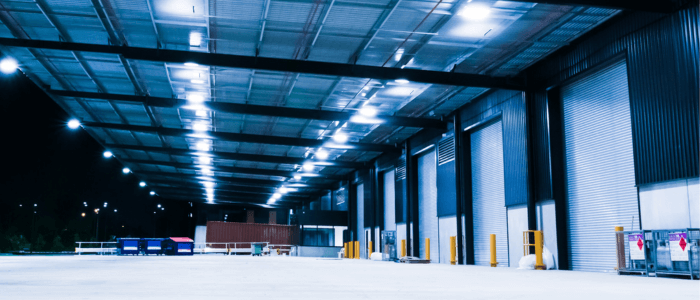It is true that housing affordability is a major concern for many Australians, and hence is still featuring as a key topic in the lead-up to the next election.
As it stands, Labor will press forward with an unchanged negative gearing policy. This policy states that investors will only be able to negatively gear brand new properties (meaning they can only claim against their taxable income an overall loss generated by an investment property, if the property was purchased brand new as an investment).
However, if an investor buys a second-hand property that generates an overall loss in a year (negatively geared), they will not be able to claim that loss against their taxable income.
The intention is to divert investors away from second-hand properties, to invest instead in brand-new properties or other assets. Theoretically, this will curb the demand for second-hand property, putting downward pressure on prices (and therefore property values) and make those properties more affordable for first-home buyers.
Ideally, it will also have the added bonus of saving the budget billions of dollars in tax refunds currently paid out to investors due to their negatively geared investments.
On the surface, it seems sensible. But if we drill down into the details we discover that whilst this policy will likely deter everyday mum and dad investors away from second-hand property (and possibly property as an investment in general), it is likely to have little impact on the purchasing behaviour of the wealthy investors, who are also receiving the majority of the tax benefits. Most affected will be homeowners, small-time investors, small business owners, and renters – here is why.
Wealthy investors
Grattan Institute analysis of tax office data shows that whilst some middle-income earners negatively gear, the benefits overwhelmingly go to high-income earners, with almost half of the tax benefits of benefits going to the top 10 percent of income earners. In fact, their data shows the top 20 percent of those negatively gearing get 53 percent of the negative gearing benefit.
What has been buried in the detail of labors policy is that these high-income earners will still have the ability to negatively gear assets (brand new or established) to offset the positive income derived by other assets in their portfolio. Investment portfolios will be viewed in aggregate, not individually for each asset. This means that assets that are positively geared can be offset by an asset that is negatively geared. So long as the portfolio remains positive or neutral, these investors will not really be impacted.
Tax Institute senior tax counsel Bob Deutsch highlighted to the Australian Financial Review that, “This aggregation point is not well understood… You have to be positively geared in the aggregate across your investment profile. If you have a range of investments and some are positively geared and some are negatively geared, you can mix and match them together.”
This is how we end up with wealthy investors visiting their accountants each year for tax planning, discovering they have made too much money, and then buying negatively geared property to offset the investment income earned. As a bonus, under Labor’s new policy, prices for second-hand properties will have dropped and these wealthy investors are best placed to shop for them and grow their portfolios further.
These investors are also most likely to hold investment properties in a company structure, which will not be impacted by the proposed changes anyway.
Middle-income investors
Recurring statistics in the media state that approximately 1.3million people access the tax benefit of negative gearing, with more than half of those individuals earning less than $80,000pa, and holding only 1 investment property.
Whilst today’s investors will fall under the grandfathering clause (it will only affect new investment purchases after a yet-to-be-determined date), downward pressure on house prices (values) will directly affect these individuals and their net accumulated wealth will contract. If these investors are too highly leveraged (their asset value is not much greater than their debt), this could have devastating consequences for cash flow and long-term security should the bank no longer consider their assets sufficient to secure their debt. Further downward pressure on prices could these hard workers with homes that cost them much more than they are worth by the end of their loan period. A move to sell and cut losses however would force more properties onto the market and adversely impact prices further.
Many of these investors who can often only afford to invest in property if it is negatively geared for the first few years will be pushed out of the market, or diverted to higher-risk new developments. Long development periods combined with a policy intended to reduce house prices can make these investments higher risk options.
Homeowners (no investments)
Homeowners, whose property is now “second-hand” are expected to see a fall in their property’s value under Labors proposed policy. In fact, some experts estimate that at least 450,000 homeowners are already experiencing a negative equity position (where they owe more than what they can sell their property for). Equity gained from time in the market will be eroded to some extent and relative capital gains will diminish.
First home buyers
A looming question we haven’t seen answered is how low do prices have to drop before they are considered affordable? Is affordability only an issue for buyers wanting to purchase in capital cities? Or is it a regional issue as well? Despite the continued falling of house prices in capital cities at up to 10% for the past year, median house prices in Sydney are still nearly $1million. This means that a first home buyer, wanting to buy at 80 LVR needs a $200,000 deposit (plus legal expenses etc). A further 10% drop in the market, on top of the 7% drop over the last 12 months could see the median price fall to $900,000, still requiring a deposit of $180,000 – is this now affordable? To make a significant difference in the entry cost for first-home buyers into capital cities, we will need to see an alarmingly large fall in house prices. Whilst this may be good for first-home buyers, it would mean disaster for everyone else.
First-home buyers who are prepared to look further out to new suburb developments, or to new higher-density CBD developments will experience greater competition for those properties as they compete with investors who are being diverted to those same properties. Whilst this may be great for developers, will these properties hold value once they become second-hand?
Renters
Much focus is put on the likelihood of rents rising should investors be unable to offset the early losses of holding second-hand property as an investment. Firstly, this will make saving to purchase a home more difficult for those that are renting in the meantime. Additionally, this upward pressure on rent will be seen most in desirable CBD areas, as investors buy less established stock (reducing the number of rental properties available). These areas are often considered safer investing areas as renters typically like to rent in close proximity to work, public transport, and public amenities. Instead, affordable renting will be pushed to the outer suburbs of newly developed areas where investors are being encouraged to buy, or to higher risk high-density development. It would follow that ability to live in established CBD areas will become exclusive to wealthy homeowners and people who are able to pay high rents.
Small business owners
Small business owners as an aggregate are the largest employers in Australia and the majority of business loans taken out by small business are secured by residential property. A continued drop in property values will have adverse consequences for small business owners who may find themselves too highly leveraged and unable to access credit, or bring their equity position back to an acceptable level. Already SME lending growth has almost reached zero as it becomes harder for small businesses to meet tighter loan administration requirements as a result of the banking royal commission. Coupled with uncertainty in the property market and the intention of labor to continue to drop property values to meet the needs of first-home buyers, small business sustainability and growth will be at risk.
So how do we address the affordability issue?
We live in one of the world’s wealthiest countries, with some of the world’s most beautiful cities and some of the world’s most expensive property. Affordability is a real issue in Australia’s largest capital cities, however, the problem is not as dire nationally. The question is how do we ensure reasonable affordability for Australians who need to work and live in the city, without depressing the property market nationally?
As it is now, tighter lending conditions and increased interest rates for investors have contracted their activity in the market. Combined with less foreign investment, we have already seen a drop in prices in Sydney and Melbourne over the last 12 months. The uncertainty of where these prices may settle is making investors and small business owners cautious and loan applications and approvals for investors has been steadily falling. Whilst this should probably be considered a necessary adjustment after steep growth in recent years, could the market sustain another shock, or should we wait and see where prices settle under the current adjustments that have been made already?
Further opportunities to address affordability include:
- Increasing the density of major cities through more high-density infill development, including the rezoning and redevelopment of low-density areas that are close to the city. Increased supply should help to curb price growth. However beware, incentivising investors to also purchase these brand new properties as opposed to established properties, will create greater demand and competition for these properties to the detriment of first home buyers.
- Incentivising major employers to decentralise operations to regional areas, along with improved infrastructure and amenities in those areas would divert some demand from the capital cities to the regions. The resulting decrease in demand for CBD properties should also assist with keeping property price growth low or stagnant.
- Action to address the historically low wages growth, combined with slower growth of property prices would also contribute to a addressing the gap.
- Finally, a tax policy that seeks to limit serial passive investment by wealthy individuals would be more effective in addressing the growing value of benefits paid out at tax time, and create a more level playing field for first-home buyers and small investors.
To address Labor’s proposed policy however, I don’t see the abolition of negative gearing for small-time investors who purchase second-hand properties as an effective response to Australia’s housing affordability issue. It has every possibility of keeping these investors out of the market or heavily restricted, allowing the rich to continue to grow their wealth, and keeping the poor and middle class without the opportunity to follow.
Leah Wilkins BEcom
Director








